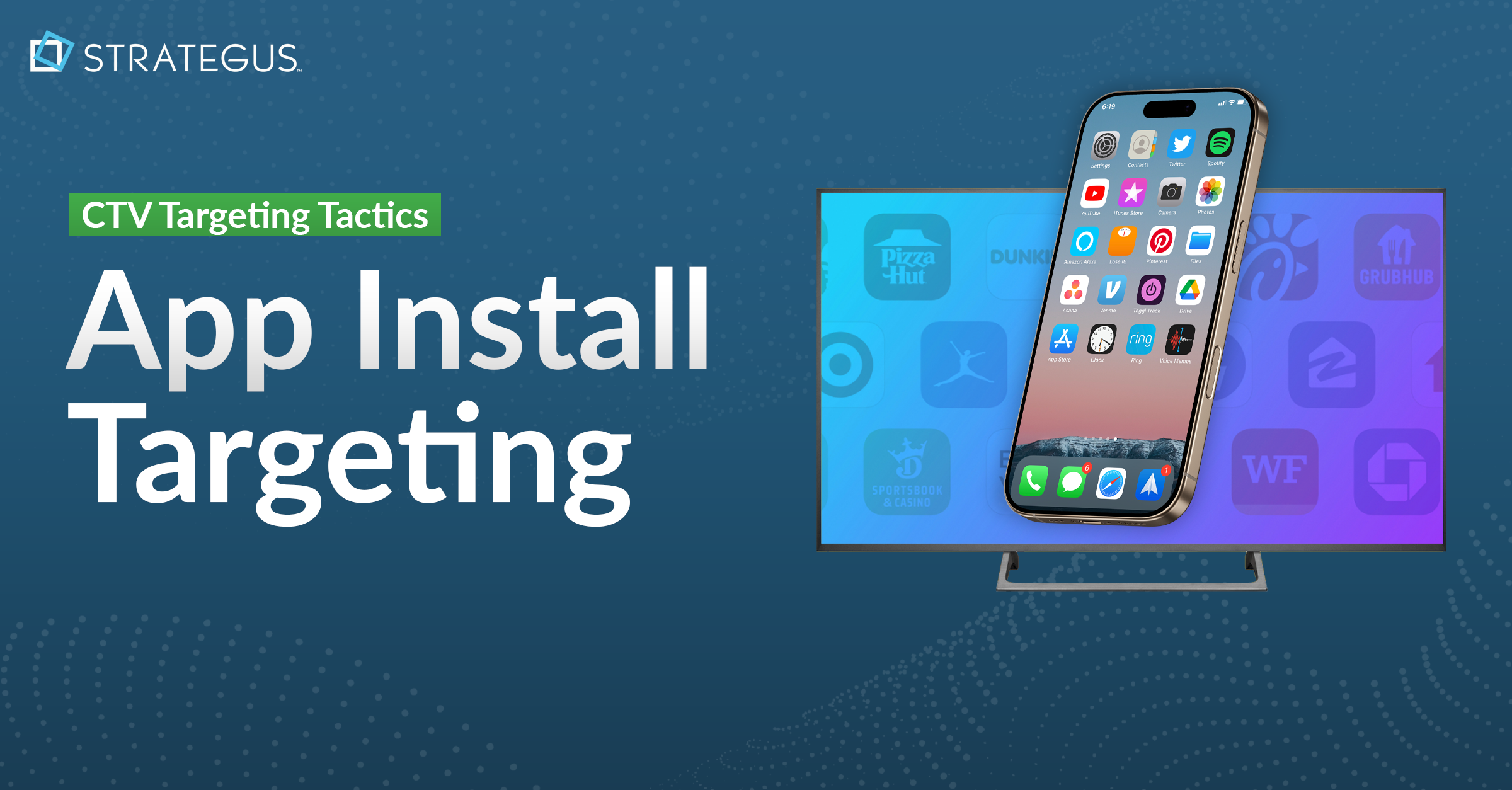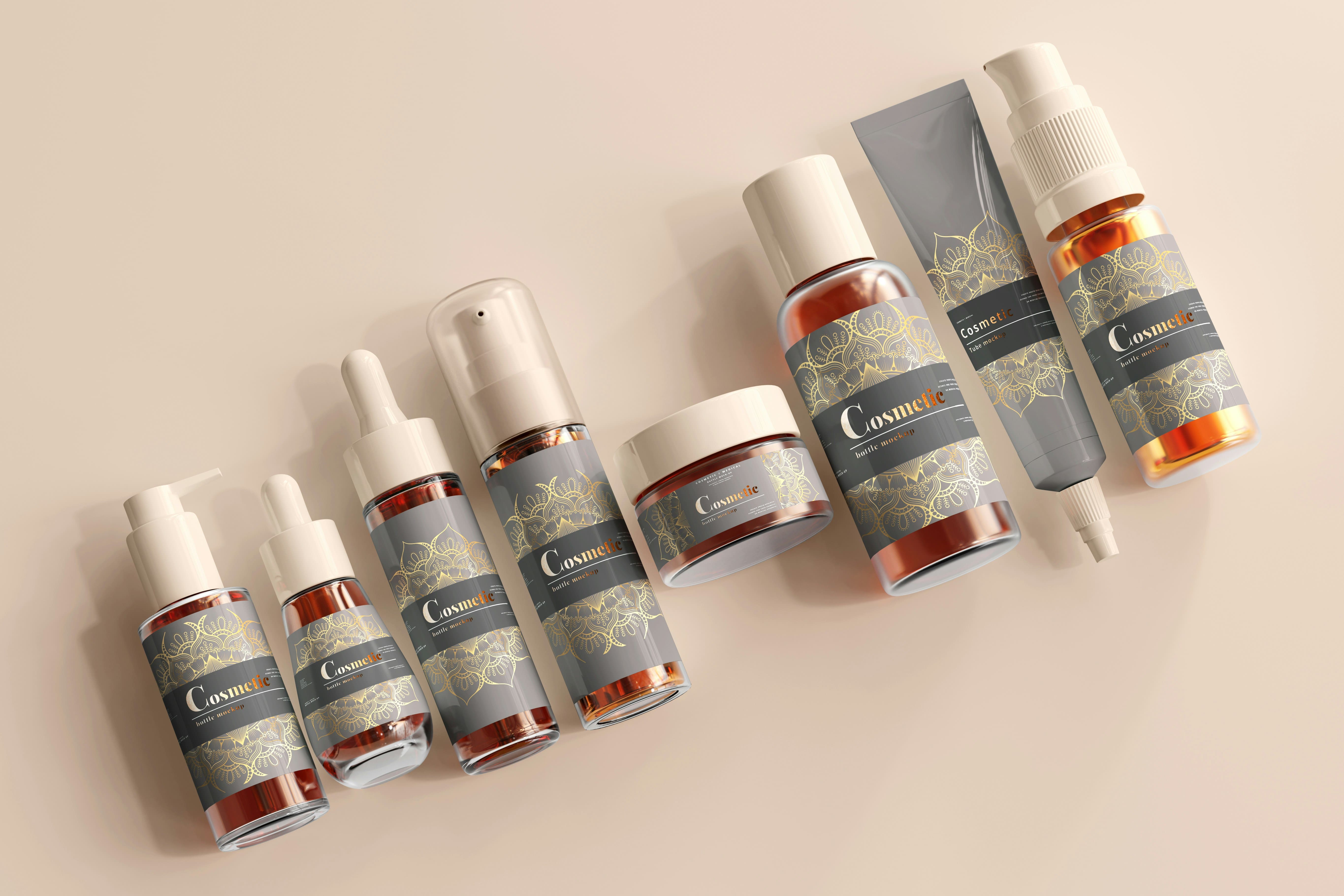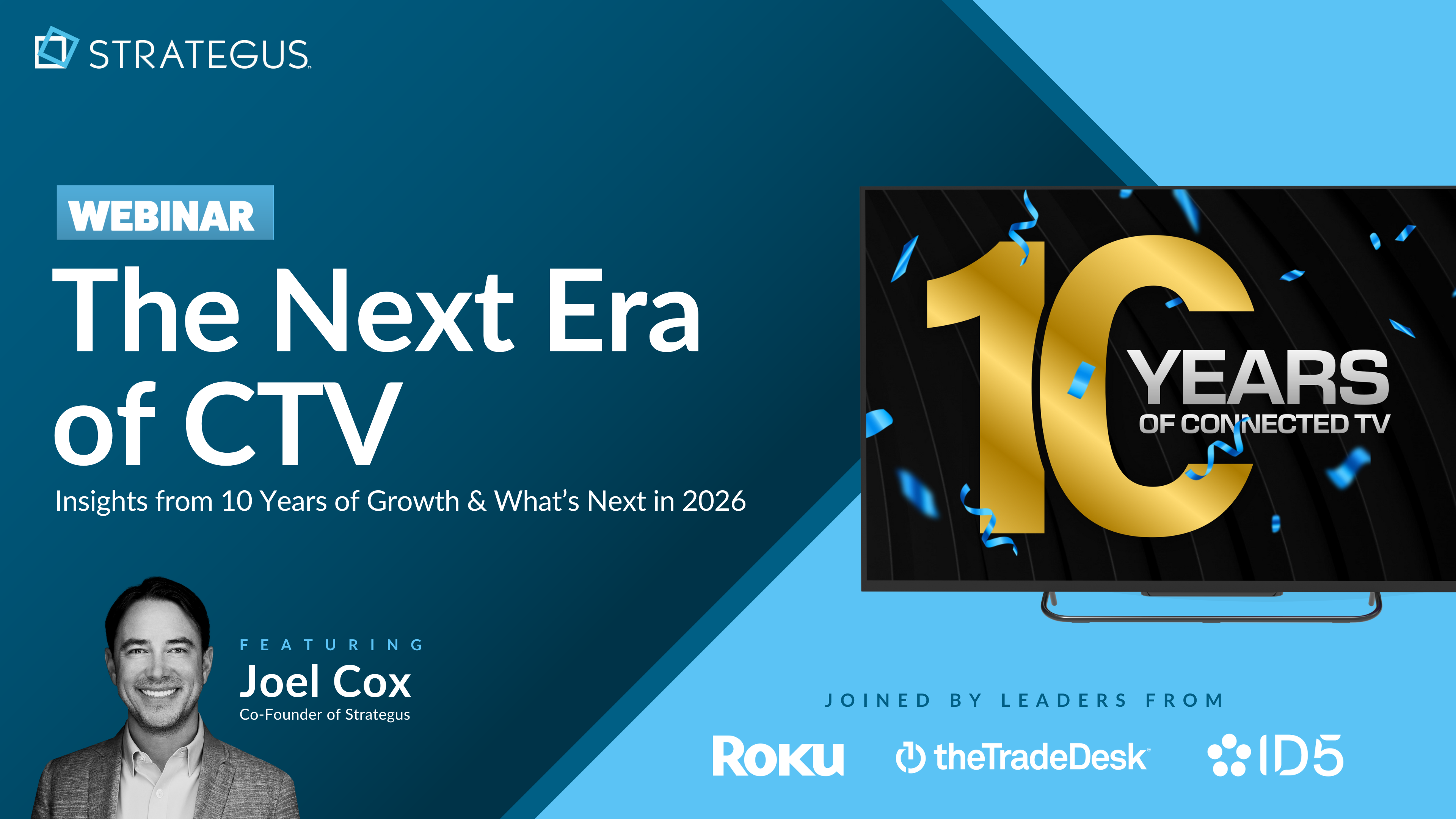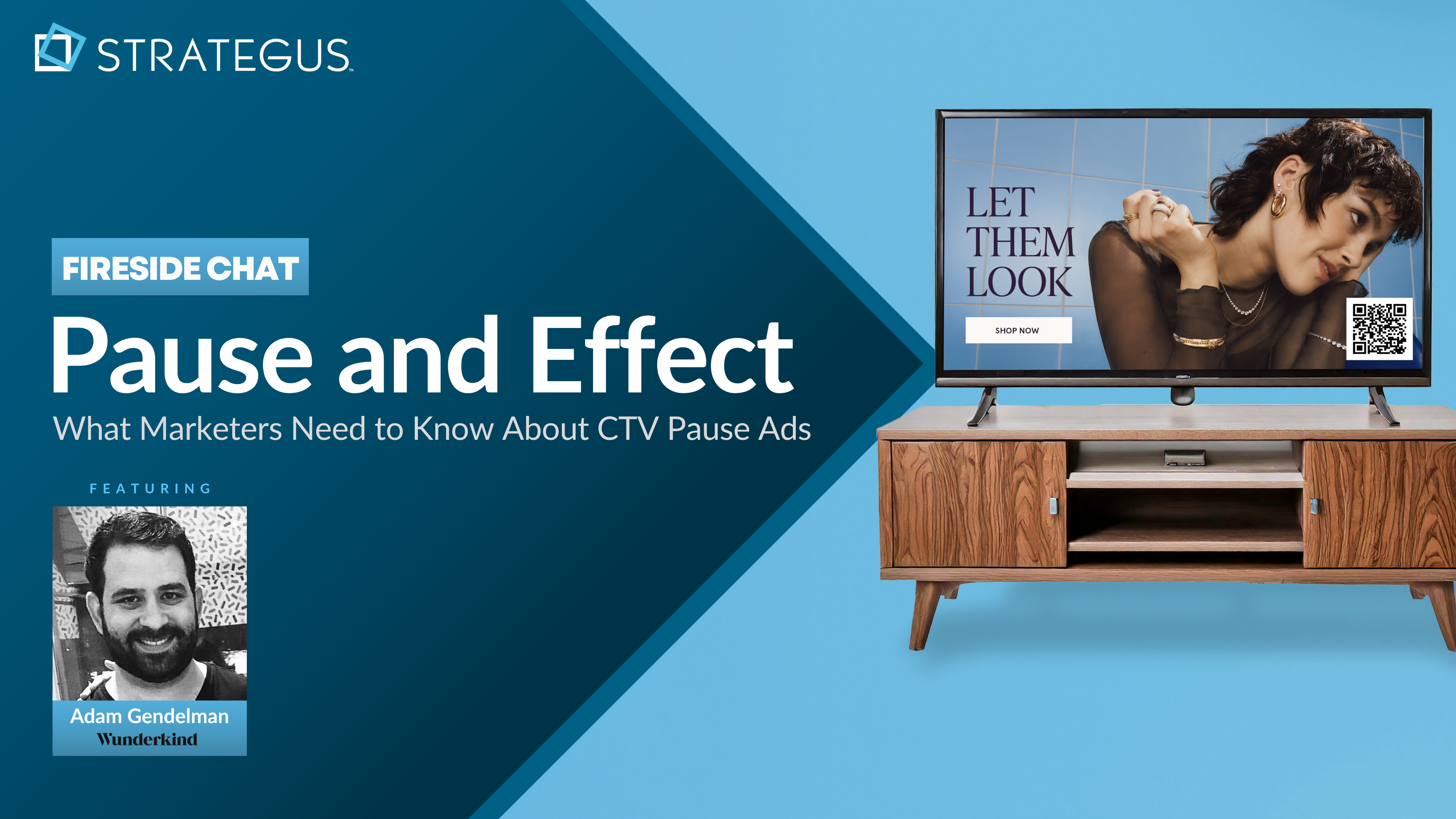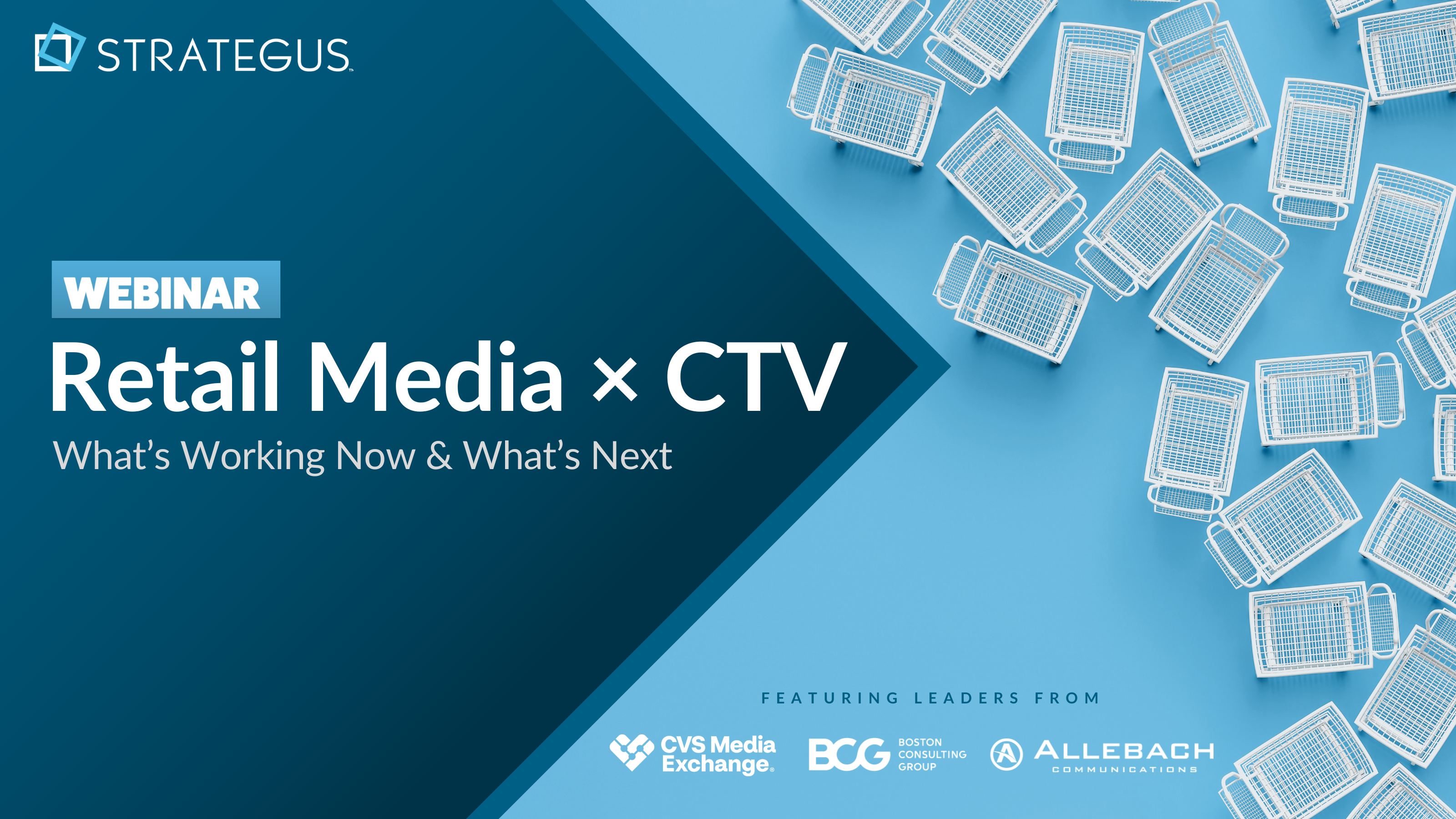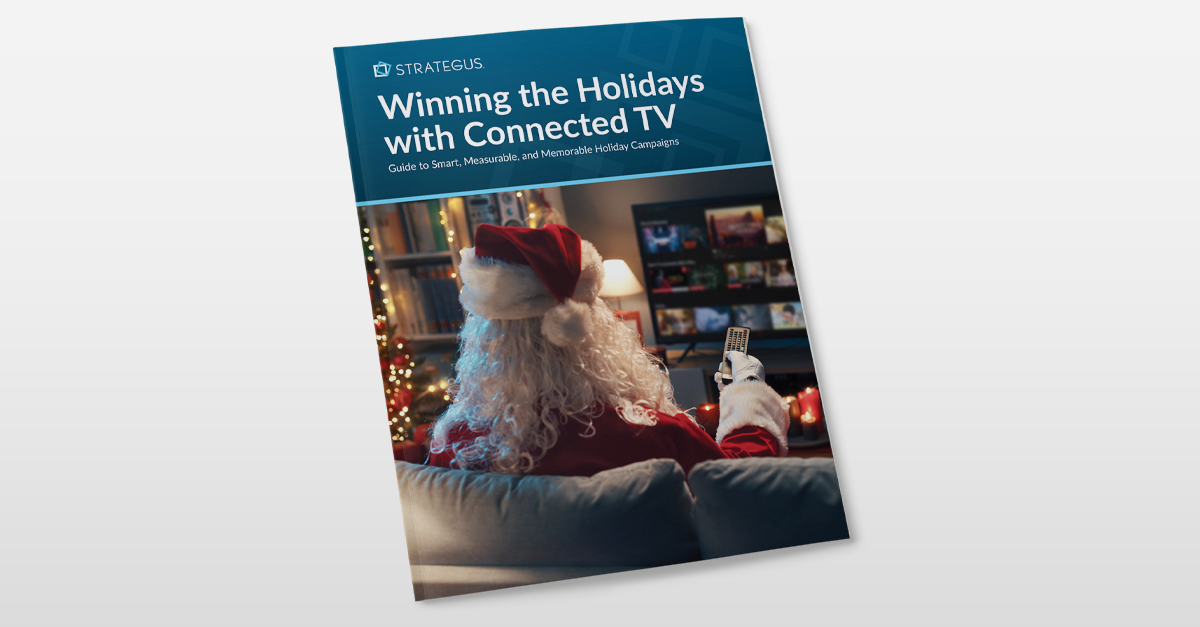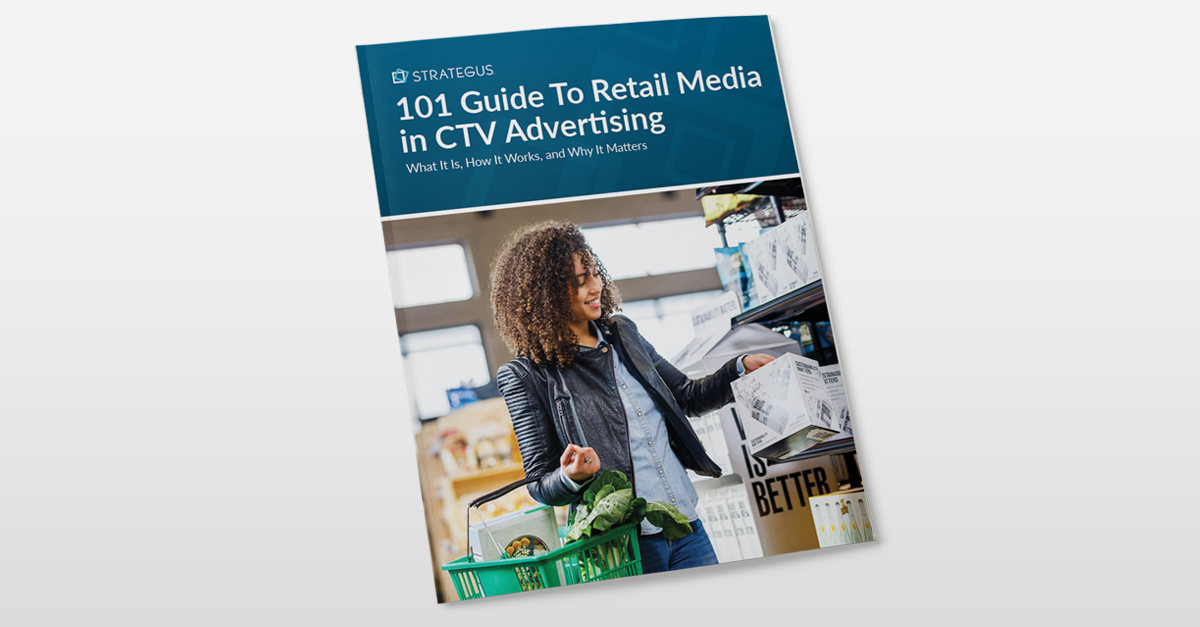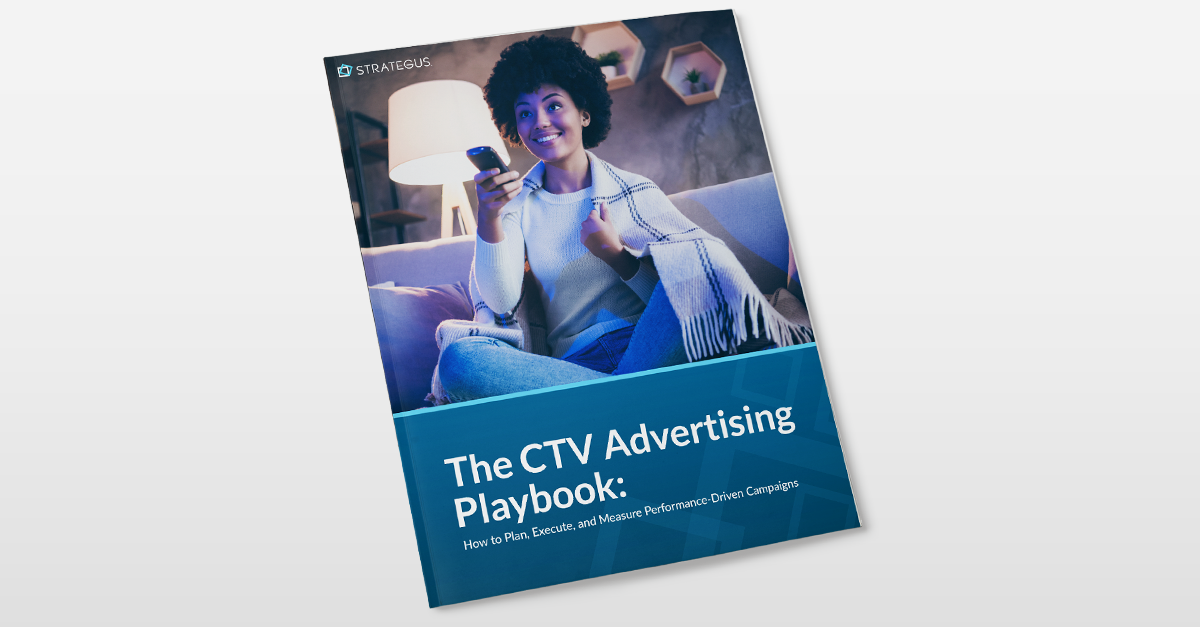- Home
- Strategus Blog
- Programmatic vs Non-Programmatic Advertising (2026 Guide)
Programmatic vs Non-Programmatic Advertising (2026 Guide)
10 minutes read
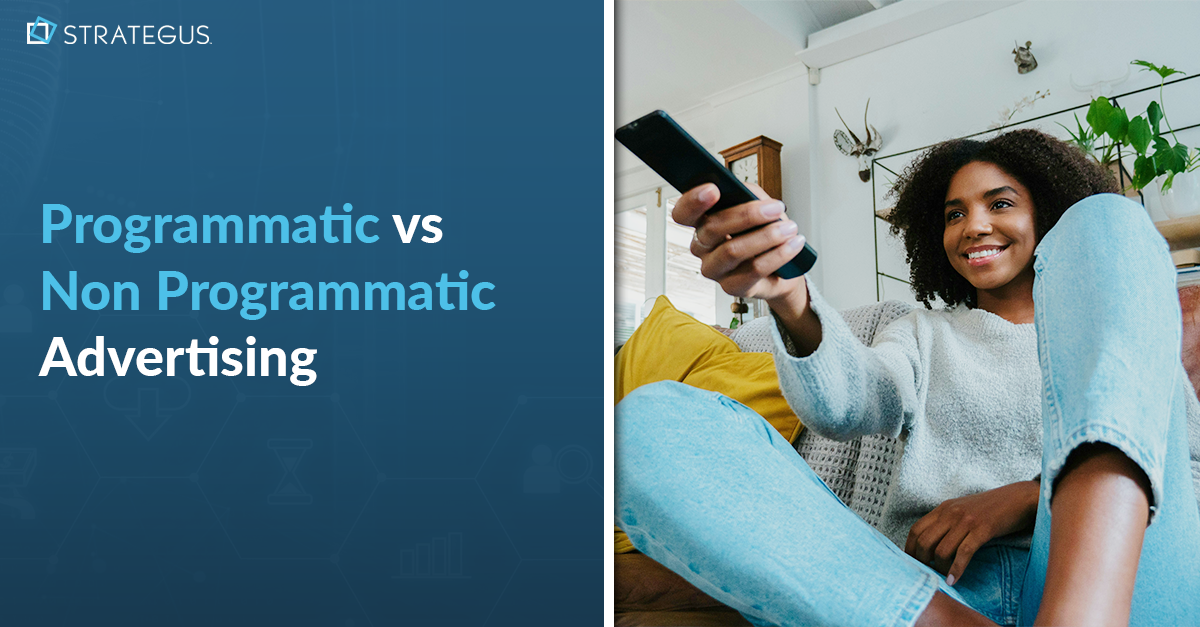
Ever wondered why some brands seem to reach the right audience effortlessly while others waste budget on ads that never convert?
The answer often lies in whether they use programmatic or non-programmatic advertising.
This guide breaks down both approaches, their differences, and which one makes sense for your 2026 marketing strategy. By the end, you’ll know where to invest.
Key Takeaways
- Programmatic advertising automates ad buying with software and data across CTV, display, video, and audio; non-programmatic uses manual publisher deals and fixed placements.
- Programmatic enables precise audience targeting, real-time bidding, and live optimization; non-programmatic offers limited targeting, slower changes, and fewer in-flight adjustments.
- Programmatic benefits include efficiency, scalable reach, cross-device delivery, clear reporting, and stronger ROI powered by AI optimization, first-party data, and privacy-first identity solutions.
- Non-programmatic excels for premium sponsorships, direct publisher relationships, tailored integrations, and brand safety control, but is resource-intensive, less flexible, and harder to measure.
- How it works: DSPs buy inventory, SSPs sell it, ad exchanges run real-time auctions, highest bid wins, and the creative serves within milliseconds.
- Ready to streamline buying and prove ROI with smarter targeting and attribution? Speak to a Strategus expert to launch fully managed, cross-channel programmatic campaigns.
Programmatic vs Non-Programmatic Advertising: What’s the Difference?
Programmatic advertising uses software and data to buy ads automatically, making targeting faster and more accurate. Non-programmatic advertising relies on manual deals between buyers and sellers, which takes more time, offers less precision, and often costs more to manage.
Programmatic works through real-time bidding and direct automated deals. Advertisers can use audience data to reach people across devices, adjust budgets on the go, and see clear reports. This makes it flexible, cost-efficient, and easy to scale for different goals.
Non-programmatic usually means buying ad space directly from publishers or through networks. Advertisers get fixed spots, like a homepage banner or a magazine slot, which can be good for brand awareness. But the process is slower, less flexible, and harder to measure.
Let’s take a deeper look at how both differ:
1. Automation vs Manual Processes
The biggest difference between programmatic and non-programmatic advertising is automation. Programmatic uses algorithms and machine learning to buy ads automatically, removing the need for manual negotiations or paperwork. This makes the process faster, more efficient, and less error-prone.
Non-programmatic relies on manual work at every step, from finding the right audience to negotiating prices and managing campaigns. This approach takes more time, needs more resources, and cannot adjust quickly to real-time changes.
2. Audience Targeting Capabilities
Programmatic advertising makes targeting very precise. It uses data like age, interests, location, and online behavior to show the right ad to the right person at the right time. This helps brands reach engaged audiences and reduce wasted spend.
Non-programmatic advertising works with broader groups and fewer targeting options. Advertisers may reach many people, but not always the ones most likely to care about the message, which lowers efficiency and increases costs.
3. Real-Time Optimization
A major advantage of programmatic advertising is real-time optimization. Programmatic platforms track performance data constantly and adjust bids, placements, and targeting automatically to improve results and maximize ROI.
Non-programmatic advertising takes a slower, manual approach. Changes happen less often and usually depend on past data instead of live insights. This delay can cause missed chances to react to new trends or shifts in user behavior.
4. Cost Efficiency and ROI
Programmatic advertising improves cost efficiency by automating the buying process and using real-time bidding. Advertisers pay the best price for each impression based on audience value, which reduces wasted spend and delivers stronger returns on the budget.
Non-programmatic advertising can be more expensive. Manual negotiations and broad targeting make it harder to control costs or optimize performance. Without real-time adjustments, campaigns often deliver lower ROI compared to programmatic methods.
What is Programmatic Advertising?
Programmatic advertising is a way of buying and selling digital ads automatically with software. It uses algorithms and real-time bidding to decide when and where to show ads, removing the need for manual negotiations.
With this approach, advertisers target audiences more accurately, spend budgets more efficiently, and measure results quickly. Publishers earn more from their inventory and manage it more effectively. Programmatic covers many formats, including connected TV (CTV), display, video, mobile, and native ads, across different devices and platforms.
Benefits of Programmatic Advertising
Here are some benefits of the programmatic approach in the advertising industry.
1. Increased Efficiency and Time Savings
Programmatic advertising streamlines the ad-buying process, saving you valuable time and resources. Automated real-time bidding eliminates the need for manual negotiations and insertion orders, allowing you to focus on strategic campaign planning and optimization.
2. Enhanced Audience Targeting and Personalization
Programmatic platforms harness vast amounts of data to create detailed user profiles, enabling you to deliver highly personalized ads to your target audience. Advanced targeting options, such as demographic, behavioral, and contextual targeting, get your message to reach the right people at the right time, increasing ad relevance and engagement.
Learn More About Audience Targeting →
3. Improved Campaign Performance and ROI
Real-time optimization is a hallmark of programmatic advertising. Continuous analysis of campaign metrics allows for automatic adjustments to bid prices, ad placements, and targeting criteria, maximizing your return on investment. Programmatic platforms optimize your ad spend, ensuring you pay the optimal price for each impression based on its value to your target audience.
4. Access to Vast Ad Inventory
Programmatic advertising opens up a world of ad inventory across multiple platforms and formats. You can reach your audience through display, video, mobile, and connected TV on a wide range of websites and apps. This extensive reach allows you to connect with your target audience wherever they are in their online journey.
Learn More About Ad Inventory →
5. Cross-Device and Cross-Channel Reach
Programmatic advertising enables you to engage with your audience seamlessly across devices and channels. As users move between desktop, mobile, and connected TV, programmatic platforms guarantee your ads follow them, providing a consistent and cohesive brand experience. This cross-device and cross-channel approach maximizes your campaign's impact and drives better results.
Learn More About Cross-Device Retargeting →
What is Non-Programmatic Advertising?
Non-programmatic advertising is the traditional way of buying ads through direct talks between advertisers and publishers. In this process, advertisers negotiate prices, choose placements, and make fixed agreements without using automation.
This method often applies to premium spots like sponsorships or homepage takeovers, where brands want strong visibility. It is slower and less efficient than programmatic, but it gives advertisers more control and the ability to personalize placements.
Benefits of Non-Programmatic Advertising
Non-programmatic advertising offers unique advantages for advertisers seeking more control and direct relationships with publishers. While it may lack the automation of programmatic platforms, this traditional method provides benefits that are well-suited to certain campaigns and business needs.
1. Direct Relationships with Publishers
Non-programmatic advertising involves direct negotiations with publishers, fostering stronger relationships. This allows advertisers to secure premium placements, such as homepage takeovers or sponsored content, ensuring their brand stands out in high-visibility areas. These collaborations often lead to customized deals that align closely with campaign goals.
2. Full Control Over Placements
Advertisers have greater control over where their ads appear, making it easier to maintain brand safety and help placements align with their values. This control helps avoid issues like ads appearing next to inappropriate content, a concern sometimes associated with programmatic advertising.
3. Premium Placements for Brand Awareness
Non-programmatic campaigns often focus on high-impact placements, such as exclusive sponsorships or front-page banners. These premium placements are ideal for generating brand awareness and reaching large audiences during key moments, such as product launches or special events.
4. Tailored Campaign Strategies
The manual nature of non-programmatic advertising enables greater flexibility for tailored campaigns. Advertisers can work directly with publishers to create unique messaging or integrate their ads into specific editorial content, ensuring a more cohesive and engaging experience for the audience.
Programmatic vs Non-Programmatic Advertising: Which is Better?
Both programmatic and non-programmatic advertising have their merits, but programmatic is the more efficient and scalable option for modern businesses.
While non-programmatic advertising allows for premium placements and hands-on control, it’s often time-intensive, requiring direct negotiations and manual management. This limits its scalability and can make it challenging for advertisers to optimize campaigns on the fly.
While non-programmatic may suit specific high-profile campaigns, programmatic advertising is the superior choice for businesses looking to streamline their efforts, improve targeting, and achieve greater returns on their ad spend.
For those ready to harness the power of programmatic, Strategus offers a fully managed solution tailored to deliver impactful results.
How Does the Programmatic Ad Buying Process Work?
The programmatic ad buying process involves several key players and technologies working seamlessly to deliver targeted ads to the right audience at the right time.
- Demand-Side Platforms (DSPs): These platforms are used by advertisers to automate the purchase of ad inventory. DSPs allow advertisers to set targeting criteria, bid prices, and budgets, ensuring ads reach the desired audience at an optimal cost.
- Supply-Side Platforms (SSPs): These platforms are used by publishers to manage and sell their ad inventory programmatically. SSPs connect publishers to multiple ad exchanges and DSPs, maximizing revenue by selling impressions to the highest bidder.
The Real-Time Bidding Process
- When a user visits a website or app, an ad request is sent to an ad exchange.
- The ad exchange initiates a real-time auction among advertisers using DSPs.
- DSPs place bids based on the value of the impression to their target audience.
- The highest bidder wins, and their ad is instantly served to the user.
This entire process occurs in milliseconds, ensuring a seamless experience for the user.
Is Programmatic Advertising Worth the Investment?
Programmatic advertising has become one of the most powerful ways for businesses to scale their advertising strategies. It allows brands to cut wasted spend, reach the right people, and run campaigns that scale across multiple channels.
While managing it in-house can feel complex, the benefits far outweigh the challenges when used effectively.
Why Programmatic Advertising Matters
- Precise targeting that ensures your ads reach the right audience at the right time
- Automated buying and bidding that saves time and lowers costs
- Scalable campaigns across CTV, display, video, mobile, and more
- Real-time optimization with live data and clear performance tracking to maximize ROI
By combining automation with data-driven insights, programmatic advertising gives businesses the tools to grow smarter, spend more efficiently, and measure results with confidence.
Closing Thoughts — Going Programmatic with Strategus
Programmatic advertising offers unparalleled reach, targeting, and efficiency, but its complexity can make it difficult for businesses to manage effectively on their own.
Strategus takes that complexity out of the equation with fully managed services designed to maximize results while minimizing operational burdens. From developing a complete, goal-driven strategy to executing campaigns across CTV, display, video, and other channels, our team ensures every element of your programmatic advertising is handled with precision.
By combining advanced targeting, real-time optimization, and detailed performance reporting, Strategus empowers businesses to achieve measurable growth without the headache of managing campaigns in-house.
What You Get With Strategus
- A complete strategy tailored to your goals
- Advanced audience targeting that reaches the right people at the right time
- Real-time optimization to improve performance as campaigns run
- Detailed reporting that shows exactly how your budget delivers results
- Access to premium inventory across CTV, display, video, and more
- A hands-on team that ensures campaigns deliver maximum ROI
Don’t let complexity hold your business back. Talk to a Strategus expert today and see how Strategus can turn your advertising into a growth engine.
Frequently Asked Questions
1. How Can I Distinguish Between Direct and Programmatic Ad Buys?
Direct buying uses manual deals with a publisher for fixed placements and dates. Programmatic uses software to bid in real time across many sites and apps. Direct suits sponsorships and custom placements. Programmatic suits flexible budgets, precise targeting, rapid testing, and ongoing optimization with clear performance data.
2. How Much Does Programmatic Advertising Cost?
Costs vary by format, audience, and inventory quality. You pay CPMs that can start in low single digits for open web display and rise for video and CTV. Fees include DSP tech, data, and verification. Strong targeting and optimization reduce waste and bring down the effective cost per result over time.
3. How Do I Start Programmatic Advertising?
Define goals, audience, budget, and creative. Choose a DSP or a managed partner. Set up tracking for conversions and viewability. Build basic segments, set frequency caps, and launch small tests. Review reports daily, adjust bids and targeting, and scale winning combinations. Add private marketplace deals for better inventory.
4. How Do I Measure ROI of Programmatic vs Traditional Media Buys?
Use a shared framework. Track cost per incremental outcome, not only impressions. Compare lift through geo tests, holdouts, or MMM. Tie spend to conversions, revenue, and lifetime value. Include viewability, reach quality, and frequency. Programmatic often delivers stronger incremental lift because it targets precisely and optimizes in real time.
5. When Should a Business Consider Programmatic Advertising?
Use programmatic when goals need precise targeting, flexible budgets, and fast optimization. It fits always-on acquisition, retargeting, and performance video, including CTV. It also helps mid-market brands extend reach without big manual deals. For one-off sponsorships or bespoke integrations, direct buying can still fit better.
6. What Are Programmatic Advertising Platforms?
Programmatic platforms include DSPs for buying, SSPs for selling, exchanges for auctions, DMPs and CDPs for data, and verification tools for fraud, viewability, and brand safety. Advertisers use a DSP to set targeting, bids, and budgets. Publishers use an SSP to connect inventory to buyers at scale.
7. Can I Run Programmatic Advertising Through an Ad Server?
An ad server delivers and tracks ads, but it does not run auctions or buy inventory. You need a DSP to access exchanges and PMPs. Use the ad server for trafficking, frequency control, and measurement. Use the DSP for targeting, bidding, and optimization across publishers and formats.
8. What Are the Challenges and Opportunities in Programmatic TV?
Challenges include fragmented inventory, variable measurement, and higher CPMs. Opportunities include precise audience targeting, sequential storytelling, and strong incrementality. Use PMPs for premium supply, set frequency caps across devices, and align on a clear attribution method. Consistent creative testing and daypart controls improve efficiency and outcomes.
9. When Is Programmatic a Better Choice Than Influencer Marketing?
Choose programmatic when goals need scalable reach, strict targeting, and fast optimization tied to conversions. Programmatic controls frequency, tests creatives quickly, and scales winning audiences. Influencer marketing suits storytelling and social proof. Many brands combine both, using influencers for awareness and programmatic to retarget and drive measurable actions.
Strategus is a managed services connected TV(CTV) advertising agency with over 60,000+ campaigns delivered. Find out how our experts can extend your team and drive the result that matter most.
Talk to an Expert
Seeking a Custom CTV Strategy That Delivers?
What to read next
App Event Tracking: Tie Mobile App Activity to CTV Campaigns
Let’s say you’re running a CTV campaign for a personal finance app.
5 minutes read

Stop Guessing Who Your Audience Is — Let Their Apps Tell You
Connected TV (CTV) targeting often falls in one of two camps.
8 minutes read
See Who Bought After Your Ad + How Much They Spent
You can’t improve what you can’t measure. And for years, that’s been a major problem with TV advertising.
4 minutes read
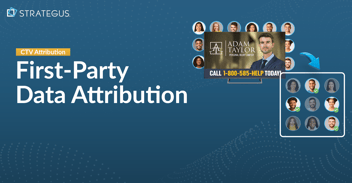
First-Party Attribution: Match Ads to Sales With CRM Data
The value of first-party data continues to grow.
7 minutes read



